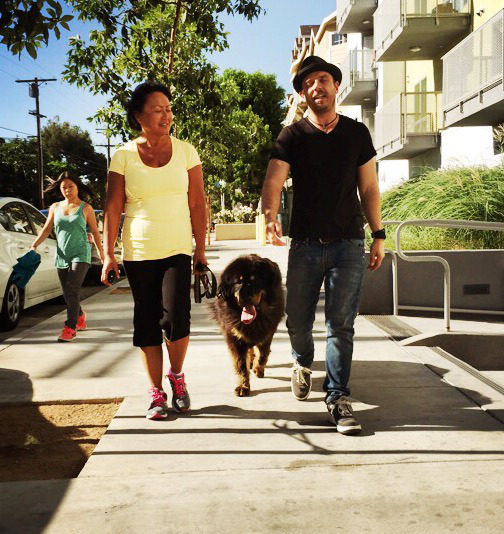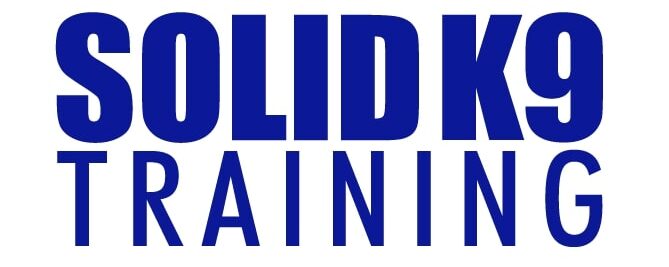First Do No Harm
First Do No Harm
By Sean O’Shea
 Ok, so here’s an interesting thought. What if even without any actual “training” (meaning all the usual sit, down, place, heel, recall etc) you could massively impact your dog’s behavior and state of mind? What if by simply NOT doing or allowing certain things you could make some great stuff happen?
Ok, so here’s an interesting thought. What if even without any actual “training” (meaning all the usual sit, down, place, heel, recall etc) you could massively impact your dog’s behavior and state of mind? What if by simply NOT doing or allowing certain things you could make some great stuff happen?
Well, the good news is, half of our success as trainers isn’t even in the actual “training” we do, it’s in all the stuff we don’t do or don’t allow.
Here’s a quick list for you to enlist to help your dog and yourself be in a better space:
-Simply cut back on all the unearned affection. Play hard to get. Only reward awesome choices and states of mind. Remove the unconscious incessant petting and stroking, make your dog work for his/her interactions. (This is almost always the single biggest contributor to neurotic and poorly behaved dogs.)
-Don’t allow disrespectful space invasions. This includes jumping on you, pushing you out of the way at thresholds, jumping on your lap uninvited etc. Instead, claim your space by using your body – not to hit or harm – but to have a calm, quiet conversation with your dog that your space is valuable and needs to be respected. For jumping you can do this by placing your knee forward when your dog jumps, so that he gets your knee and not you, and so jumping is not rewarding. At thresholds simply block with your body and then walk confidently INTO your dog’s space (and your dog if need be) to move them back. As for jumping on your lap uninvited, simply say “no” and stand up when your dog jumps on you. This will remove him from your space and make this not rewarding. Then remove your dog from the couch. (Bonus points for initially keeping a bubble of space – say 10 feet – around you so your dog works on being more independent and less clingy.)
-Don’t allow or reward demanding behavior. If your dog is barking at you for attention, for food, to play, or to get access to a door, don’t reward the behavior with what the dog is looking for. Say “no” and ignore the behavior. If your dog demands something and you respond you’ve just taught your dog what works to get what he wants. Be careful not to unconsciously reward/allow this.
-Make your dog wait. Simply make your dog wait at moments of excitement or intensity. This could be feeding time, at thresholds, going in or out of the car etc. By teaching your dog to wait for permission from you you teach impulse control, respect, and to look for permission rather than to be on auto-pilot. Conversely, by allowing this you teach your dog to ignore/disrespect you, to be impulsive, and that intensity and excitement gets him what he wants.
-Don’t baby, console, pet, nurture, smother nervous, insecure, frightened dogs. This will only make them worse. Instead, treat them like normal dogs by asking more of them, challenging them to get out of their comfort zones, give them a firm human to lean on, not a soft one to feel alone/frightened with. The way you view your dog emotionally – as a victim who is helpless and in need of rescuing, or as a dog who’s previous rough road necessitates strong leadership for healthy forward motion – will absolutely come out in your behavior towards him, and will be the largest determiner of whether your dog makes positive progress or remains stuck and/or declines. (This is a super hard one for most, due to our innate desire to nurture and help, but the truth is, true help rarely comes in the form of pity, coddling, and feeling sorry.)
-Don’t make your dog responsible for replacing that which you should be getting in the human world. One of the biggest advantages trainers have is being in an emotionally neutral space when interacting. For many owners, their dogs have become a place of solace in a world they often feel unfulfilled in. Oftentimes dogs are replacing the absence of friends, family, lovers, or simply feeling alienated or lonely in the human world. Although we might find using our dogs as an emotional crutch as helpful, this ultimately presents you in a needy, weak state that will cause pushy dogs to become more pushy, nervous/insecure dogs to become more nervous, and neurotic dogs to become more neurotic. The ultimate outcome is often the development of protective or aggressive or reactive behavior. By treating your dog like a dog – in the very best and positive sense of the phrase – you’ll set you and your dog up to be in a much more balanced space.
Once again, this is all the non-“training” stuff you can do (or not do!) that will help your dog’s behavior tremendously. Just being aware and acting on these simple recommendations can change things DRAMATICALLY!!
So even if you’re not going to do any actual obedience work and teach commands, you can still make some major changes simply by first doing no harm.
P.S. Now if you’d like to go even further and make bigger strides, change behavior more significantly, create reliability, and have a deeper, more healthy relationship with your dog, you can visit my website and watch the free do-it-yourself training videos. They’re easy to follow and will help you make some amazing stuff happen.
Sean O’Shea
The Good Dog Training And Rehabilitation
Solid K9 Training Training Center- 25 Acorn Street, Providence, RI 02903
(401) 274 1078 Providence Training Center Info
*********FOLLOW Solid K9 Training**********
Subscribe To My YouTube Channel
Facebook
Twitter
Instagram
Pinterest
